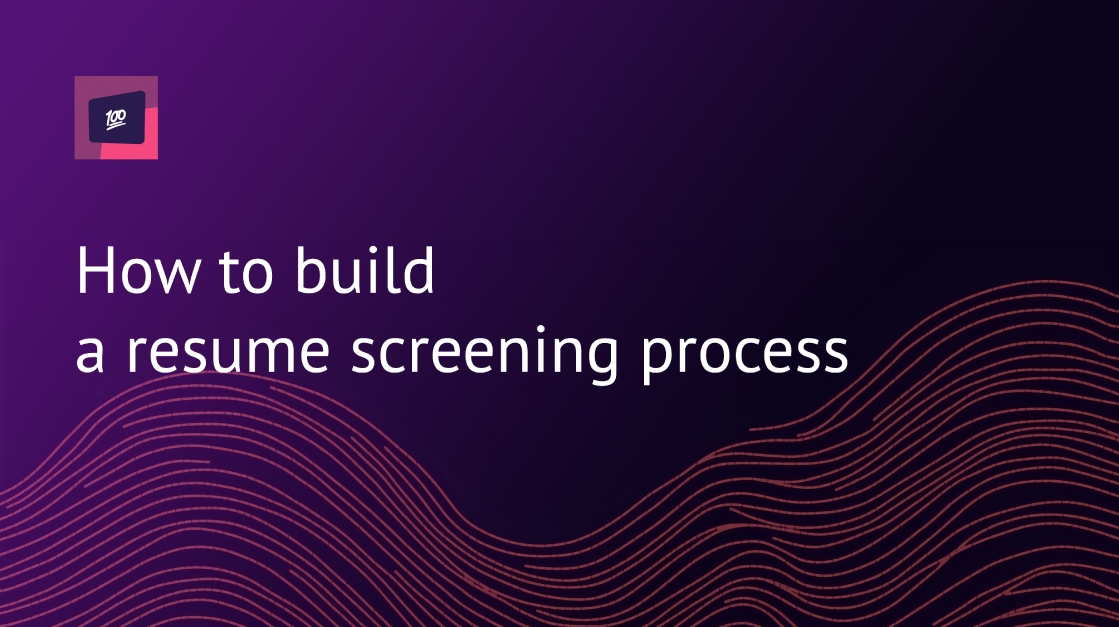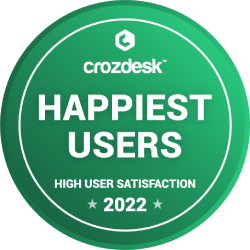How to build a resume screening process

Without a resume screening process, hiring is needlessly labor-intensive.
Work hard to attract applicants to your latest job opening and you're likely to end up with hundreds of promising resumes. But the more applicants you get, the harder it is to sift through to find the best candidates. Instead of improving the hiring process and surfacing the most promising candidates, attracting large numbers of new applicants can slow down your hiring operation.
the best candidates faster



Why resume screening matters
Following a structured resume screening process helps you make the most of every application, ensuring:
- Greater efficiency and consistency. Instead of splitting time between every applicant, resume screening allows your HR team to find and focus on the best-fit candidates. While every applicant benefits from a consistent experience with a resume screening process in place, hiring managers can enjoy a steady stream of good-fit applicants. Best of all, the screening process can be reviewed and improved over time—shaping it to suit your own recruiting ethos.
- Better diversity and less unconscious bias. A structured screening process helps you review every application in a more fair and consistent way. Creating consistency in how you review resumes, can help you avoid unintentionally favoring certain types of applicants, and reduce unconscious bias in your hiring process. It can also help you increase diversity and surface the most skilled, experienced candidates.
- Fewer missed opportunities. By creating a screening process, you're forced to distinguish between must-have and nice-to-have criteria. It helps you develop a clearer understanding of what makes a great-fit candidate, all while preventing strong, yet under the radar, candidates from being overlooked or ignored.
By spending a few hours refining your screening process, you can dramatically improve the hiring experience for recruiters and applicants alike.
How to screen resumes
Follow this straightforward four-step structure to create your own process for reviewing resumes.
1. Minimum qualifications
Every role has minimum qualifications: “basic, certifiable, typically nonnegotiable qualifications that a candidate must have to be considered for the role.” These are the core requirements that enable employees to perform the role successfully. Depending on the job posting, these minimum requirements can come in different shapes and sizes. They might be:
- Academic - such as requiring a computer science degree for some programming roles
- Professional - such as accreditation for an accountant
- Legal - such as requiring the ability to work in a given country
- Practical - such as years of experience managing a large team
To progress to the next stage of the hiring process, candidates need to meet these minimum criteria—if they don't, they can be safely ruled out from consideration.
2. Preferred qualifications
While minimum qualifications help flag unsuitable candidates, a great resume screening process will dig deeper and differentiate good candidates from great ones. Preferred qualifications are key to achieving that goal, referring to the “nonmandatory skills and experience of an ideal candidate.”
Preferred qualifications are often less black and white than minimum qualifications and may require a judgment call to determine whether a candidate's resume exhibits the skills you're after. These could include qualifications like:
- Experience in video production
- Proficiency in SQL and database design
- Collaboration across product, marketing, and sales teams
These are the skills and experiences that will give your new hire the greatest chance of success in the role. So, depending on whether they are working on digital marketing or your B2B sales strategies, these skills will vary. While their absence isn't necessarily a deal-breaker, they provide a fast and effective way to identify top candidates to interview.
Both minimum and preferred qualifications should be set out as part of the job description writing process. They provide the framework for attracting the right applicants and building the interview process, which allows you to dig in and verify whether a candidate has the skills and experience required for the open job.
3. General impressions
While reviewing for minimum and preferred qualifications should make up the bulk of the resume screening process, additional qualitative review can add useful context. If you're unsure whether you want to move a given candidate on to a phone screen, your general impressions of their resume can help swing the decision in the right direction.
Try to gauge the following:
- The candidate's attention to detail. Try to determine how much effort the candidate put into their resume. Is it carefully constructed, or was it thrown together in a hurry? What is their spelling and grammar like? Is the resume missing any key information?
- Quantifiable impact. Look for instances where a candidate has made a demonstrable difference through their work, as measured by previous job performance data, awards, or certifications.
- A clear employment timeline. A job seeker's employment history can provide much-needed context for their skills and work experience. In today's world, gaps in a candidate's employment history shouldn't necessarily be a deal breaker. But make sure to evaluate the resume, cover letter, or application for any insights that could help you understand any employment gaps.
In isolation, these factors should have a minor impact on your hiring decisions. But when you're struggling to determine a candidate's suitability, they can be enough to help make an informed decision whether to move a candidate forward.
4. Shortlist
Finally, shortlist good-fit candidates and reach out to arrange the next part of the hiring process—typically either a phone screen or an interview.
The “right” number of candidates to shortlist will be influenced by several factors: the number of applications received, the quality of the applicants, the “typical” conversion rates from applicant to employee, and your own recruitment ethos—whether you prefer to cast a wide net and interview many people, or be more selective and interview a handful.
Let unsuccessful applicants know that they didn't make it to the interview stage, showing them that you're grateful for the time they invested in their application and freeing them to pursue other positions. Keep these candidates in mind for alternative open roles—if you think they're better suited to a different role, reach out to encourage them to apply.
Resume screening with an Applicant Tracking System
An applicant tracking system (also known as an ATS) can expedite the screening process by using “resume parsing”—converting resumes into a format that's easy to store and search.
Instead of wading through hundreds of emails and attachments to find applicant information, job candidate profiles, resumes, cover letters, feedback, and internal notes can be centralized into a single dashboard, allowing you to compare applications side by side.
Some companies use resume screening software to manage high-volume recruitment processes, setting up keyword-based filters and “knock out” questions to automatically screen out unqualified candidates. For example, when hiring a back-end developer, a company might choose to automatically decline applicants who don't use the keyword “SQL”—a common back-end development language—somewhere within their resume.
While faster than conventional screening, this automated process isn't without its risks, such as:
- Overlooking great qualified candidates who didn't structure their resume in the “right” way (like mentioning “Structured Query Language” instead of “SQL”)
- Generating false positives from unqualified candidates who use keyword stuffing to game the automated resume review process
For the best results, it's important to combine resume parsing with manual oversight—regularly reviewing the efficacy and fairness of the automated process.S
Structured resume screening
Creating a structured process for screening resumes—a systematic and fair way to filter job applications—can work wonders for both the candidates' experience and the efficacy of your own hiring process. It's a win/win proposition, enabling you to find the right candidates in less time.
This article was originally posted on the Google Hire blog
the best candidates faster




